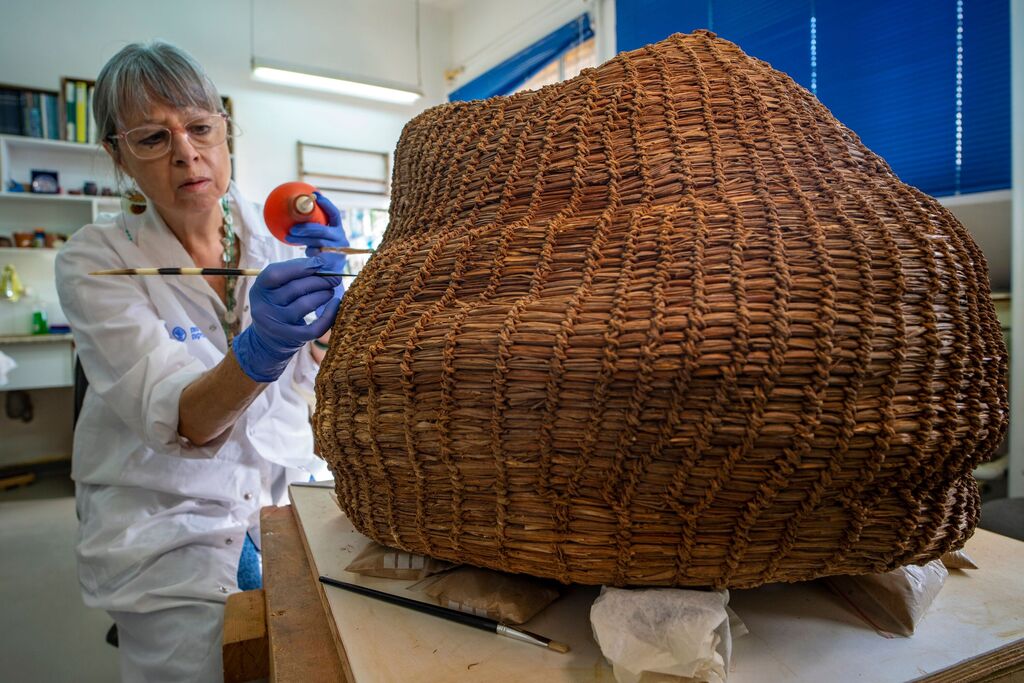Getting your Trinity Audio player ready...
Israel on Tuesday announced the discovery of dozens of new Dead Sea Scroll fragments bearing a biblical text found in a cave in the Judean Desert and believed hidden during a Jewish revolt against Rome nearly 1,900 years ago.
The scrolls, which are written in Greek save for the name of God that appears in ancient Hebrew, includes portions from the Book of the Minor Prophets, including the books of Zechariah and Nahum.
8 View gallery
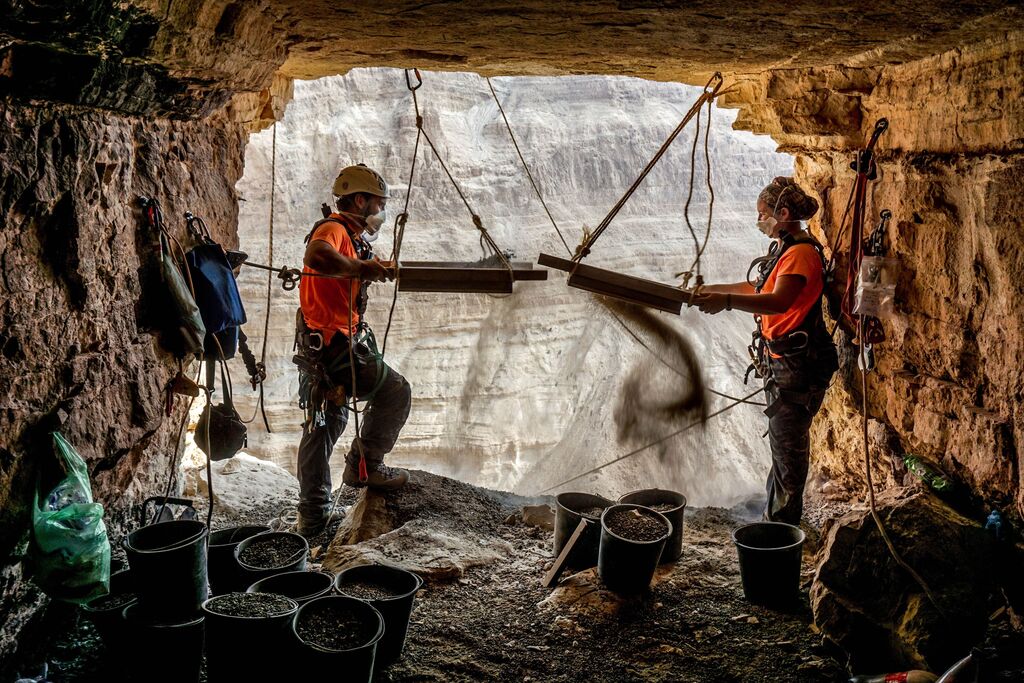

Archeologists examine items found in the Cave of Horror in the Judean Desert
(Photo: Israel Antiquities Authority)
The verses written on dozens of parchment fragments were discovered in a complex and challenging national archaeological operation undertaken by the Israel Antiquities Authority on the cliffs of the Judean Desert since 2017, as they raced to uncover the trove before looters.
The scrolls were retrieved from the Cave of Horror in the Judean Desert's Nahal Hever reserve, roughly 80 meters below a cliff top, flanked by gorges and only reached by rappelling down the sheer cliff.
The historic discovery comes 60 years after the last discovery of biblical scrolls in a West Bank cave.
8 View gallery
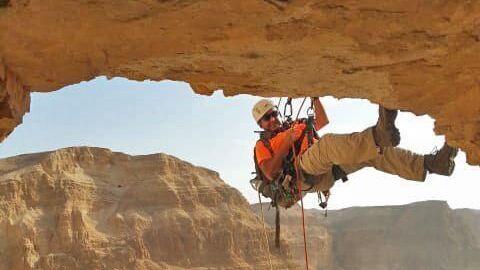

An archeologist rappels down the cliff into the Horror cave in the Judean Desert
(Photo: Israel Antiquities Authority)
The Dead Sea Scrolls, a collection of Jewish texts found in desert caves near Qumran in the 1940s and 1950s, date from the 3rd century BCE to the 1st century CE. They include the earliest known copies of biblical texts and documents outlining the beliefs of a little understood Jewish sect.
In addition to the scroll fragments, the dig announced Tuesday uncovered extraordinary finds in the area from various periods.
The find includes a cache of rare coins from the days of the Bar-Kokhba Revolt, a Jewish uprising against Rome between 132 and 136 CE; the 6,000 year-old skeleton of a likely female child, wrapped in cloth and mummified, and a large basket dating back 10,500 years, likely the oldest in the world and in perfect condition.
Israel Antiquities Authority Director Israel Hasson, announcing the find, urged the government to invest in excavating the area further.
“The newly discovered scroll fragments are a wakeup call to the state," said Hasson.
"Resources must be allocated for the completion of this historically important operation. We must ensure that we recover all the data that has not yet been discovered in the caves, before the robbers do. Some things are beyond value," he said.
“The desert team showed exceptional courage, dedication and devotion to purpose, rappelling down to caves located between heaven and earth, digging and sifting through them, enduring thick and suffocating dust, and returning with gifts of immeasurable worth for mankind.”
8 View gallery
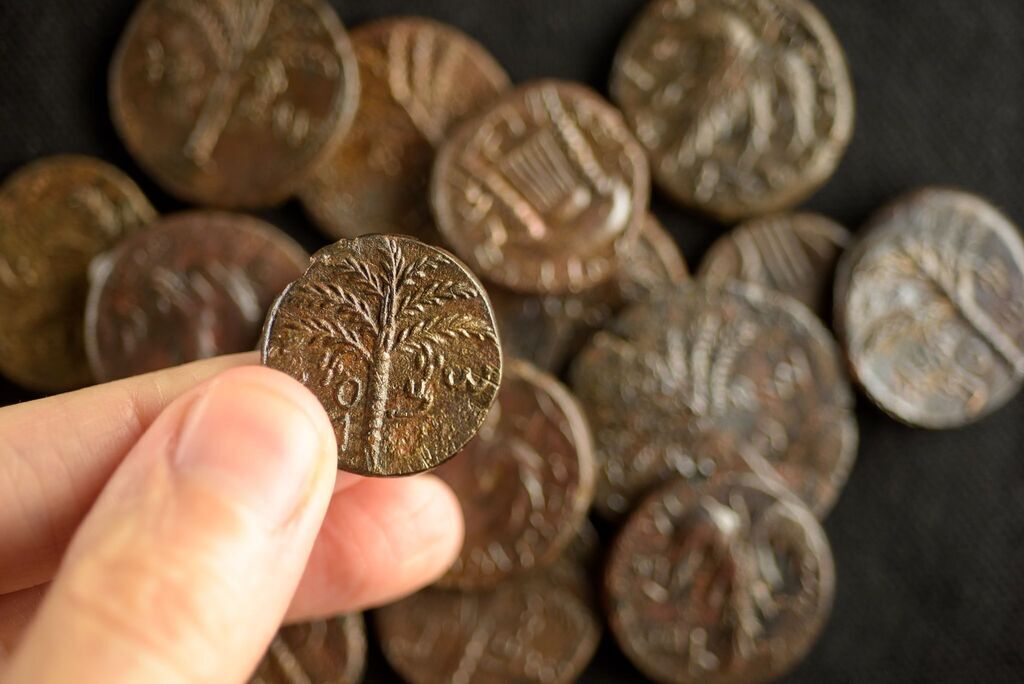

Rare coins dating back to the Bar-Kokhba Revolt were discovered in the Judean Desert
(Photo: Israel Antiquities Authority)
The fragments of the Greek scroll of the Book of the Twelve Minor Prophets was uniquely written by two different scribes, researchers said.
The conservation and study of the fragments conducted by Tanya Bitler, Dr. Oren Ableman and Beatriz Riestra of the Dead Sea Scrolls Unit at the Israel Antiquities Authority allowed for the reconstruction of 11 lines of text, partially preserving the Greek translation of Zechariah 8:16–17.
The full excerpt reads: “These are the things you are to do: Speak the truth to one another, render true and perfect justice in your gates. And do not contrive evil against one another, and do not love perjury, because all those are things that I hate—declares the Lord.”
8 View gallery
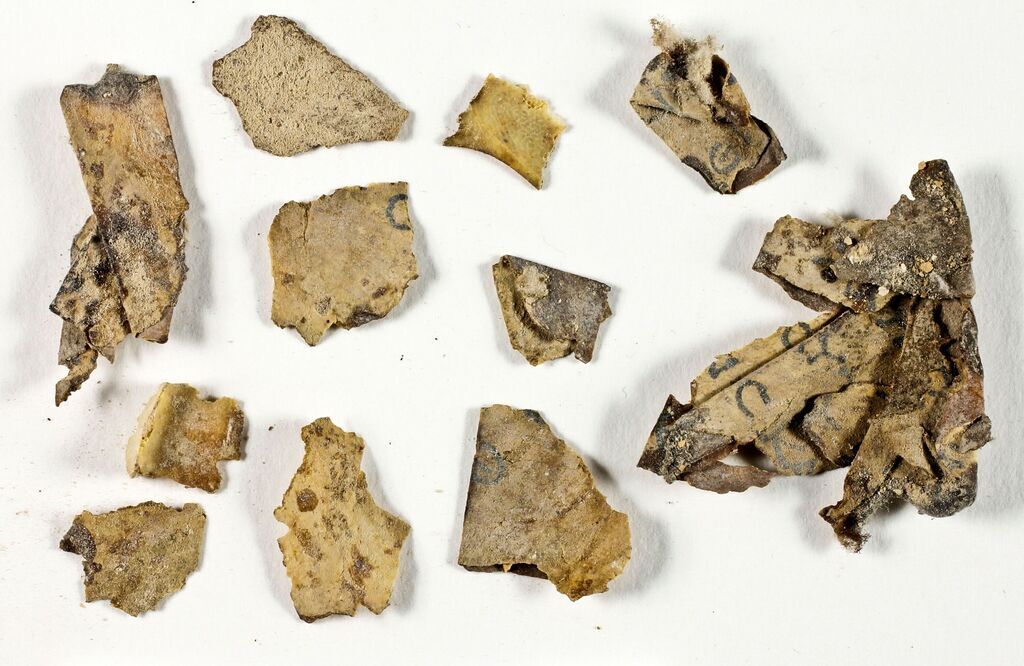

The scroll fragments found in the Judean Desert
(Photo: Israel Antiquities Authority)
Also identified on another fragment are verses from Nahum 1:5–6, which reads: “The mountains quake because of Him, And the hills melt. The earth heaves before Him, The world and all that dwell therein. Who can stand before His wrath? Who can resist His fury? His anger pours out like fire, and rocks are shattered because of Him."
Comparing the text in the newly discovered fragments to text from other existing versions highlights numerous differences, some surprising.
They shed light on the transmission of biblical text until the Bar-Kokhba Revolt, documenting changes that occurred over time until the current version.
8 View gallery
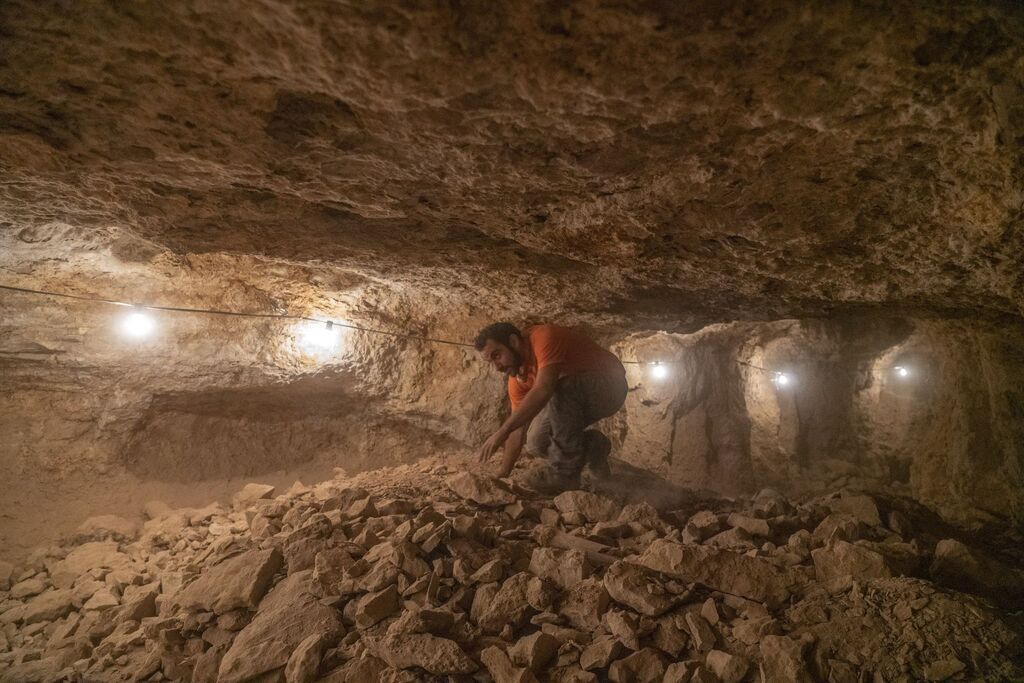

An archeologist in the Cave of Horror where rare findings were uncovered
(Photo: Israel Antiquities Authority)
Additional finds left behind by the Jewish rebels who fled to the caves at the end of the Bar-Kokhba Revolt include a cache of coins bearing Jewish symbols such as a harp and a date palm, arrow and spear heads, woven fabric, sandals and even lice combs.
The mummified skeleton of the child is estimated to be 6,000 years old. A preliminary study of a CT scan of the skeleton suggests that the child was 6-12 years old.
8 View gallery
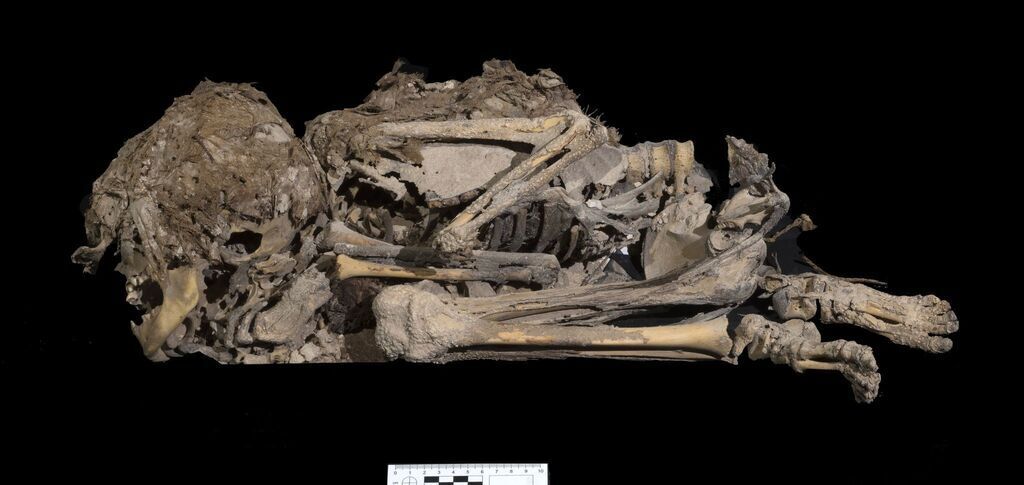

The 6,000-year-old mummified skeleton of a child discovered in the Judean Desert cave
(Photo: Israel Antiquities Authority)
Prehistorian Ronit Lupu of the Israel Antiquities Authority described the find.
"Moving two flat stones, we discovered a shallow pit intentionally dug beneath them, containing a skeleton of a child placed in a fetal position," she said.
"It was covered with a cloth around its head and chest, like a small blanket, with its feet protruding from it. It was obvious that whoever had buried the child wrapped it up and pushed the edges of the cloth beneath it, just as a parent covers a child in a blanket.
"A small bundle of cloth was clutched in the child's hands. The child's skeleton and the cloth wrapping were remarkably well preserved and because of the climatic conditions in the cave, a process of natural mummification had taken place; the skin, tendons, and even the hair were partially preserved, despite the passage of time."
8 View gallery
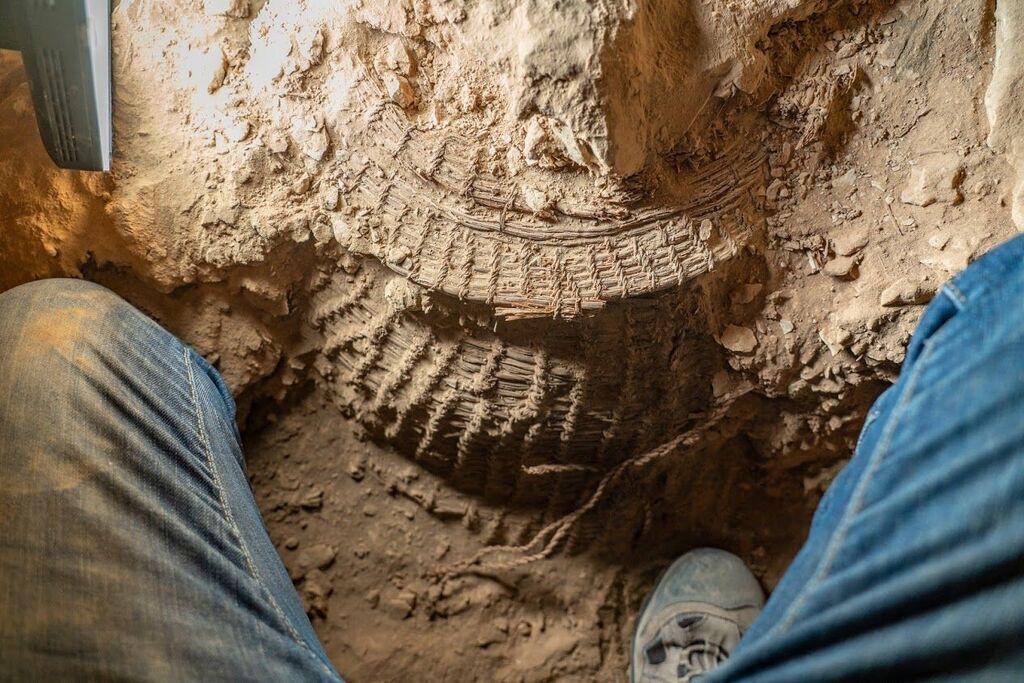

The find included an intact basket with a lid dating back approximately 10,500 years
(Photo: Israel Antiquities Authority)
Another rare find in the desert caves was a huge intact basket with a lid that was also exceptionally well preserved due to the high temperatures and extreme aridity of the region.
The basket dates to the Pre-Pottery Neolithic era, approximately 10,500 years ago.


